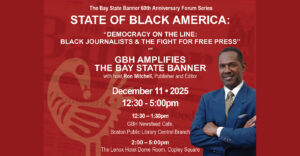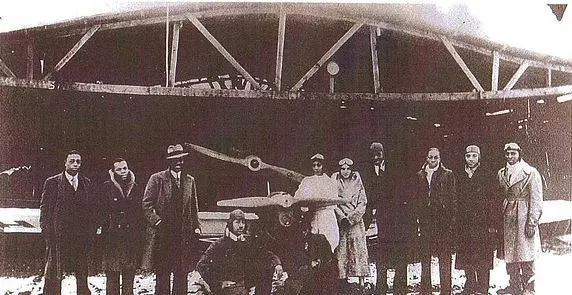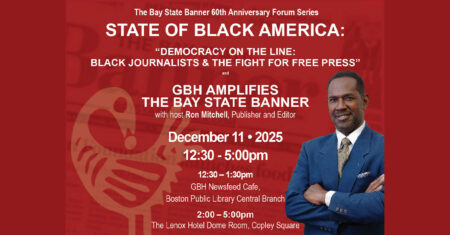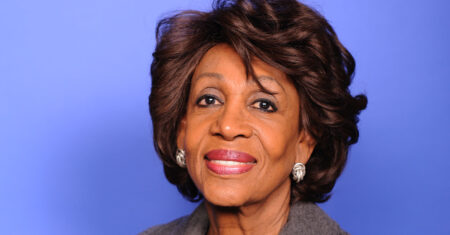A little over 20 years after Orville and Wilbur Wright pioneered powered flight, the industry was soaring. Speculators were bulldozing farmland into airstrips anywhere they thought they could generate enough business, and manufacturers produced kit planes that even those of modest means could purchase. Schools opened to provide training and licenses to anyone who had interest in flying. Except, perhaps, if one wasn’t a white man.
Pioneering pilot Bessie Coleman, who had gone to France for flight training, dreamed of opening a flight school for prospective Black pilots in Chicago and was raising funds to make it happen by putting on flying exhibitions. But an in-air mishap dumped her from her plane before a 1926 show, and she and another pilot were killed.
News of her death made national headlines, and inspired two auto mechanic friends in Detroit to follow in Coleman’s wake.
Cornelius Coffey and John Robinson ended up making history in Chicago’s south suburbs.
But it wasn’t easy. They initially were denied admission to Curtiss-Wright Aeronautical University in Chicago, because they were Black, according to Tyrone Haymore, executive director of the Robbins Historical Society and Museum.

Instead Robinson got a job as a janitor at the school on South Michigan Avenue, and timed his tasks to allow him to eavesdrop on classes. He also established an automotive garage near where the new Rosenwald Courts apartments were being erected.
The garage gave the friends the space and tools to build their own small Heath Parasol aircraft from a kit. They couldn’t afford the recommended motor, Haymore said, so they used one from Coffey’s motorcycle instead. The plane worked, and they convinced a Curtiss-Wright instructor to come out and give it a test flight.
“I’m sure he was nervous, but that plane took off into the sky just like any other ordinary plane,” Haymore said. The test flight turned into an invitation to take classes at the school that had previously turned them away. “They found out they could learn something from these two Black guys, the first Black students at Curtis-Wright Aeronautical school.”
Coffey and Robinson learned fast and became certified pilots. Their next step would be to open their own school.
“They heard about this all-Black town called Robbins, and said, ‘we won’t have any problems out there,’” Haymore said.
Indeed, they were welcomed heartily. Mayor Samuel Nichols, whose daughter Nichelle Nichols notably was a trailblazing icon aboard another aircraft, Star Trek’s USS Enterprise, helped them find land and labor to clear it for a hangar.
And the residents of Robbins also were happy about the development.
“When people here found out there were two Black guys building an airport in Robbins, they were like superheroes,” Haymore said. “People would feed them — restaurants would give free food to anyone building that airport. And if they wanted to spend the night they always had a place to stay. People were so welcoming.”
Operating under the name the Challenger Air Pilots Association, they opened the nation’s first Black-owned airport in Robbins in 1931 along 139th Street. The Robbins Historical Museum now occupies part of the site.

Around the same time, brothers Fred and William Schumacher were developing a new airport in what was then unincorporated Oak Lawn, at 87th Street and Harlem Avenue.
“They had money, but they didn’t have a lot of aviation skills,” Haymore said. “As far as I know, neither one of them were pilots. They were looking for a way to make money, and back then airports were a moneymaker.”
The Schumachers had funds to build several hangars, Haymore said, while the Challenger Air Pilots Association was raising money on the fly and relied upon volunteer labor and donated wood for the Robbins Airport’s single hangar, which would house two planes.
Among their investors were Janet Harmon Bragg, a business owner who financed the association’s aircraft. She would later become the first African American woman to hold a commercial pilot license. Pioneering Black pilot Willa Brown also was involved, helping the association get government grants to fund the operation.
Things were going well until disaster struck.
“Three years after they had built the airport, they’d built the hangar, but not put the front door on it,” Haymore said. “In 1933, a violent wind storm hit this area and completely tore up that hangar and destroyed the two airplanes inside.”
Coffey and Robinson planned to rebuild in Robbins but their skills at repairing aircraft as well as the success of their training program for Black pilots had caught the eye of the Schumacher brothers in Oak Lawn.
“The Schumachers talked Coffey and Robinson out of rebuilding in Robbins,” Haymore said. “They said, ‘just come up here. We need you here.’”
Haymore will present a program on the south suburban pioneers of Black aviation at 6 p.m. Feb. 21 at the Oak Lawn Public Library.
Integrating the Harlem airport’s training program for white pilots and the Challenger program for Black students wasn’t easy.
“They knew race would be a problem, and they thought they could manage it,” Haymore said. “But they had real problems.”
The Schumachers initially separated the two programs into different hangars, but that wasn’t enough. The hangar where Coffey and Robinson operated was burned down.
“They didn’t want Blacks out there,” Haymore said. “But the Schumachers weren’t going to let the whites turn them out of there.”
They moved the operation to another hangar at the south end of the airport but not long after that, Coffey began teaching white and Black students together at the facility.
“Coffey kept saying that Black instructors could teach everyone, and that white students and Black students can learn together,” Haymore said. “Finally, the Schumachers agreed with that and it happened.”
The flight school at the airport in rural Oak Lawn ended up training hundreds of pilots, many who went on to become associated with the Tuskegee Airmen and some who fought in World War II as part of the Red Tails squadron.

Robinson left the program in the mid 1930s after being recruited by Ethiopia to help develop that country’s air defenses as an invasion by Italian dictator Benito Mussolini loomed.
“They have monuments to him over there,” Haymore said.
Coffey stayed at the airport at Harlem Avenue and 87th Street, which closed for good after its owners lost its lease in 1956.
He later went on to teach at several schools in Chicago, including a long stint at Dunbar High School.
The historic airstrip where boundary busting trailblazers and World War II flying heroes learned to fly fell victim to the latest trend in moneymaking land use. The site became a shopping center and was annexed by the village of Bridgeview.
Haymore said he went out there and asked around about the old airport, but few remembered it, “even old people.”
But memory of its former use, and the occupants initially shuffled to its far reaches lives on in the plaza’s name as well as the street that accesses it: Southfield.
The legacy of Coffey, Robinson and the Challenger Air Pilots Association remains strong in Robbins, though the airport there lasted only a couple of years. Haymore said it remains a point of pride just as much now as it did then.
“That airport brought so much excitement to this area,” he said. “Neighboring communities were jealous.”
A story Coffey told him about those days still offers that spark of civic pride in Robbins.
“The mayor of Midlothian at the time lived right next to the airport,” Haymore said. “He’d send the police to lock up Coffey and Robinson in jail, because he didn’t like them flying as low as they were flying over his house.
“They always get bailed out, and he got voted out and later he moved. That lot is still up for sale.”
Landmarks is a weekly column by Paul Eisenberg exploring the people, places and things that have left an indelible mark on the Southland. He can be reached at peisenberg@tribpub.com.







